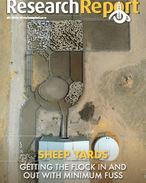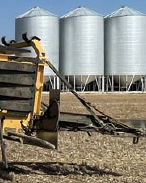This article is 8 years old. Images might not display.
Sorghum is a key ingredient in baijiu, China’s national drink and the world’s top-selling spirit.
Researchers from the Australian Export Grains Innovation Centre (AEGIC), the University of Queensland’s Alliance for Agriculture and Food Innovation and the Functional Grains Centre at Charles Sturt University are working to identify the quality and varieties of sorghum that are best suited to the China market.
Funded by AEGIC and the Grains Research and Development Corporation, the research will focus on a better understanding of sorghum grain in baijiu production and the quality of grain best suited to Chinese consumer tastes.
The research is being undertaken in eight locations within five provinces to capture manufacturer and consumer preferences in different regions of China.
Chengdu-based Austrade Trade Commissioner Christina Goodman said quality baijiu was a premium product, with the most expensive bottles valued at hundreds of thousands of yuan.
“Taste and reputation is the key to market share and top Chinese manufacturers’ value consistent, quality supply,” Goodman said.
“While Australia’s clean, green reputation and ability to supply counter-seasonal products are well known, it’s challenging to differentiate Australian products and maintain market share in bulk commodity markets.
“The Australian research will help narrow down the specific attributes of sorghum that could contribute to high-quality baijiu.”
Made in China for more than 5000 years, baijiu is the most widely drunk liquor in the world.
It makes up one-third of the world’s total liquor output and is worth an estimated US$23 billion annually.
Baijiu is primarily distilled from fermented sorghum and Australian sorghum exports peaked in 2015 at over AU$500 million.
Chinese baijiu manufacturers have increased their use of Australian sorghum and Chinese producers also used sorghum in animal feed as a substitute for corn during a period of high corn prices.
Sorghum exports also benefited from tariff reductions under the China-Australia Free Trade Agreement.
The researchers are also working to better understand the opportunities for using Australian sorghum in animal nutrition.






















